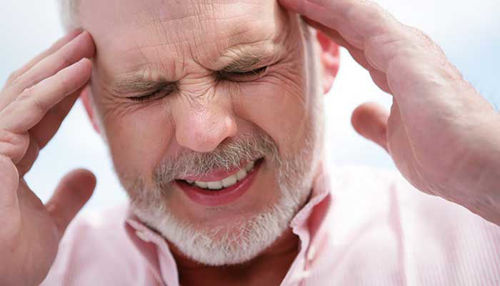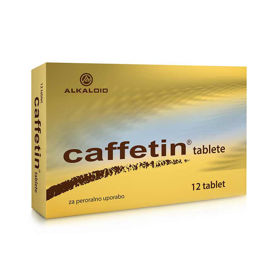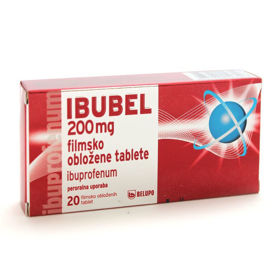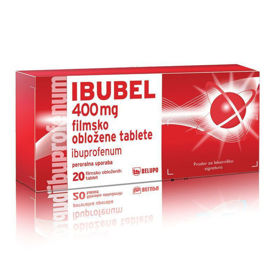Headaches are among the most common health problems. Some people get headaches often, while others hardly ever. Both chronic and recurring headaches can be painful and distressing, but they rarely indicate a severe illness.
TENSION HEADACHE: General | Tension Headaches | Migraine Headaches | Questions and Answers | Sources/references
A change in the pattern or nature of the headache - e.g., if the headache becomes more frequent or stronger - could mean a serious problem, so in such a case, an immediate visit to the doctor is necessary. Headaches are primarily tension-type, migraine, or headaches without an apparent cause. Many headaches are associated with problems around the eyes, nose, throat, teeth, and ears.
Many chronic headaches attributed to eye strain are tension headaches; new, severe pain in or around the eyes may indicate increased eye fluid pressure (glaucoma) and is a medical emergency. During the examination, the ophthalmologist can identify the cause of this type of pain and prescribe the appropriate treatment. High blood pressure can cause a throbbing sensation in the head and rarely chronic headaches.
Image: Tension headaches are caused by straining the neck, shoulders, and head muscles.
.jpg)
Usually, a doctor can determine the cause of a headache from the patient's personal history and physical examination. Sometimes, however, blood tests are needed to detect the underlying disease. A lumbar puncture, in which a small sample of fluid is taken from the spine and examined under a microscope, is done when the doctor suspects that the headaches are caused by an infection (e.g., meningitis). The doctor can also perform a lumbar puncture if he suspects bleeding in the meninges.
Video content: Tension headaches.

A bacterial or fungal infection that causes inflammation of the meninges (meninges that surround the brain and spinal cord) is rarely the cause of a characteristic, usually acute and unrelenting headache. Such an infection is also characterized by fever and other signs of a severe illness.
Brain tumors, brain damage, or lack of oxygen in the brain rarely cause chronic headaches. If the doctor suspects a tumor, stroke, or some other problem related to the brain, he may order brain imaging with computed tomography (CT) or magnetic resonance imaging (MRS).
Tension headaches
Tension headaches are caused by muscle tension in the neck, shoulders, and head; muscle tension can result from an uncomfortable body position, social or mental stress, or fatigue.
Symptoms and diagnosis
Tension headaches generally start in the morning or early afternoon and worsen during the day. A constant, moderately severe pain often occurs above the eyes or in the back of the head; the pain may be accompanied by pressure as if a ring were squeezing the head. The pain can spread all over the head and sometimes down into the nape of the neck and shoulders.
For the doctor to be able to distinguish tension headaches from more severe diseases, he takes into account how long the pain lasts, as well as the patient's description of where the pain occurs, what causes it, what relieves it, and whether it is accompanied by other symptoms, e.g., dizziness, weakness, loss of sensation or fever.
Headaches that start more recently that wake a person from sleep are unusually severe, do not go away at all, occur after a head injury, or coincide with other symptoms, e.g., tingling, weakness, loss of coordination, vision changes, or fainting are probably not tension headaches.
Image: A migraine headache is a recurring, throbbing, severe pain.
.jpg)
They may have a serious cause that a doctor must find out immediately. Thus, for example, headaches from a brain tumor or other dangerous cause are more likely to have occurred recently, to be steadily progressing, to be worse in the morning than in the afternoon and evening, to be unrelated to fatigue or work, to be accompanied by reduced exercise and nausea, and to become less severe or worse when a person changes the position of the body (lying down or standing up).
| Cause | Features | Diagnostic tests |
| Tension | Headaches are common; the pain (tension) occurs intermittently and is moderate, and the patient feels it in the forehead and back of the neck or has a general feeling of tightness or stiffness. | Investigations to exclude physical diseases; assessment of mental factors and personality. |
| Migraine | The pain begins in or around the eye or in the shadow area, spreads to one or both sides, and usually affects the whole head but may be unilateral, throbbing, accompanied by loss of gait, nausea, and vomiting. The patient has had similar periodic attacks for a long time; attacks are often preceded by mood swings, loss of running, and gaps in the field of vision with flickering edges; rarely, the patient weakens on one side of the body. This form of headache is often hereditary. | If the doctor is not entirely sure about the diagnosis and the headache appeared recently, he decides to take an MRS or CT scan; otherwise, for migraine medicine to see if it works. |
| Bursting headache | Attacks are short (1 hour); the pain is severe, and the patient feels it in one half of the head; attacks occur episodically in groups (with intermediate periods when there are no headaches) and mainly in men. The patient has other symptoms on the same side as the pain: swelling around the eye, runny nose, and tearing. | Migraine medicines for the doctor to see if they work - e.g., sumatriptan or methysergide - or vasoconstrictor drugs, corticosteroids, indomethacin, or oxygen inhalation. |
| High blood pressure (hypertension) | A rare cause of headache except in people with severe intermittent hypertension due to an adrenal tumor; the pain is throbbing, appears in spasms, and is felt in the back of the head or the back of the head. | Biochemical blood tests, kidney tests. |
| Eye problems (iritis, glaucoma) | Pain is felt by the patient in the forehead or above the eyes; it is moderate or severe and often increases after straining the eyes for a long time. | Eye exam. |
| Problems with nasal cavities (sinuses) | The pain is acute or subacute (but not chronic); the patient feels it in the forehead; it is dull or severe; it is usually worse in the morning, milder in the afternoon, and very pronounced in cold, damp weather. The patient has a history of upper respiratory infection, pain in one part of the face, and a blocked or stuffy nose. | Painting of the nasal cavities. |
| Brain Tumor | The pain is recent, intermittent, and mild to severe; it can occur in one spot or all over the head. One half of the body can slowly become weaker and weaker; the patient has epileptic seizures (convulsions), impaired vision, inability to speak, vomiting, and mental changes also occur. | Magnetic resonance imaging (MRS) or computed tomography (CT). |
| Brain infection (abscess) | The pain is recent, intermittent, and mild to severe; it can occur in one spot or all over the head. The patient may have had an ear, sinus, or lung infection or have rheumatic or congenital heart disease. | Magnetic resonance imaging (MRS) or computed tomography (CT). |
| Infection of the meninges (meningitis) | The pain appeared recently; it is constant, and the patient feels it all over the head and spreads down the neck. The patient feels very unwell, has a fever, is vomiting, and previously had a sore throat or a respiratory infection; he cannot bend his neck to touch his chest with his chin. | Blood tests, lumbar puncture. |
| Bleeding in the tissues around the brain has occurred recently, is intermittent or constant and mild to severe, can occur in one spot or all over the head, and spreads down the neck. | The patient recently injured his head and can fluctuate between consciousness and unconsciousness. | Magnetic resonance imaging (MRS) or computed tomography (CT). |
|
Subarachnoid hemorrhage |
The pain that appeared recently is extensive, severe, and constant; sometimes, the patient can feel it in and around the eye: droopy eyelid. |
Magnetic resonance imaging (MRS) or computed tomography (CT); if the result is negative, lumbar puncture. |
|
Syphilis, tuberculosis, cryptococcosis, sarcoidosis or cancer |
The pain is dull to severe, and the patient feels it all over the head or only on the top of the head. The patient has a moderate fever and a history of syphilis, tuberculosis, cryptococcosis, sarcoidosis, or cancer. |
Lumbar puncture. |
<h2class="table-responsive">Treatment
Tension headaches can often be prevented or managed by avoiding the stresses that cause them or by understanding and adapting to them. Once the headache has started, gently massage the neck, shoulders, and head muscles, lie down, and relax for a few minutes, or do autogenic training, which can help relieve it.
Most headaches can be quickly and temporarily relieved by almost any over-the-counter pain reliever, e.g., acetylsalicylic acid, paracetamol, or ibuprofen. Severe headaches may respond to more potent prescription pain relievers, as some of them contain narcotics (e.g., codeine or oxycodone). In some people, caffeine, which is a component of some headache preparations, increases the effect of analgesics. On the other hand, too much caffeine can even trigger a headache.
In the case of headaches caused by chronic stress or depression, analgesics alone will not cure the disease because they do not treat the underlying mental problems. Patients with headaches due to unresolved social or mental conflicts may benefit from professional counseling.
Migraine headaches
A migraine headache is a recurring, throbbing, severe pain that usually affects one half of the head, but sometimes both; the pain starts suddenly, and symptoms such as vision, nervous system, or gastrointestinal disturbances may appear before or at the same time.
Although migraine headaches can start at any age, they usually start in people between the ages of 10 and 30. Sometimes, they disappear after the age of 50. Migraines are more common in women than in men. More than half of people who suffer from migraines have close relatives who have the same problem; this indicates that the predisposition to this disease is likely to be hereditary. Migraine headaches are generally more severe than tension headaches.
A migraine headache occurs when the arteries leading to the brain narrow (constriction) and then widen (dilation), which activates nearby pain receptors. We don't know what causes blood vessels to constrict and dilate; contractions can be triggered by abnormally low blood levels of serotonin, a substance involved in nerve cell communication (a neurotransmitter). Rarely, the root cause of migraine headaches may be a blood vessel malformation; in such cases, the head almost always hurts on the same side.
Video content: What happens to your brain during a migraine?

In most people, however, headaches appear unsystematically on one side or the other. No laboratory test can help diagnose migraine, but this type of headache is usually easy to recognize due to its characteristic course.
Questions and answers
What is the difference between a norDifferencehe and a migraine?
Migraines usually involve a throbbing sensation on one side of the head that often worsens with activity. Unlike a headache, migraine is often accompanied by other symptoms such as nausea, vomiting, vision problems, sensitivity to light or sound, and tingling [1].
How is a migraine treated?
There is no cure for migraines. But your doctor can help you manage your symptoms:
- painkillers
- avoiding migraine triggers
- use of alternative medicines for migraine[2]
Can a headache be chronic?
A patient who has a headache at least 15 days a month is said to have a chronic daily headache[3].
How is tension headache diagnosed?
Tension headache is mainly diagnosed based on the symptoms you report. A thorough physical examination may rule out underlying diseases or conditions, including other tests or procedures. Tracking and sharing information about your headache with your doctor helps make an accurate diagnosis[4].
What is the most common cause of headache?
Some of the most common headache triggers are lifestyle-related, such as poor diet, stress, muscle tension, and lack of exercise. Underlying severe diseases such as brain tumors rarely cause headaches, although a persistent headache should always be examined by a doctor[5].
Sources and references
An extensive health manual for home use, Youth Book Publishing House
- What's the DifferDifferenceen aMigrDifference Headache? - https://www.archildrens.org
- Migraine Headaches - https://my.clevelandclinic.org/
- Chronic Daily Headache - https://www.hopkinsmedicine.org
- Tension Headaches - https://www.hopkinsmedicine.org
- Headache - https://www.betterhealth.vic.gov.au











 Facebook
Facebook
 Instagram
Instagram
 info@moja-lekarna.com
info@moja-lekarna.com

